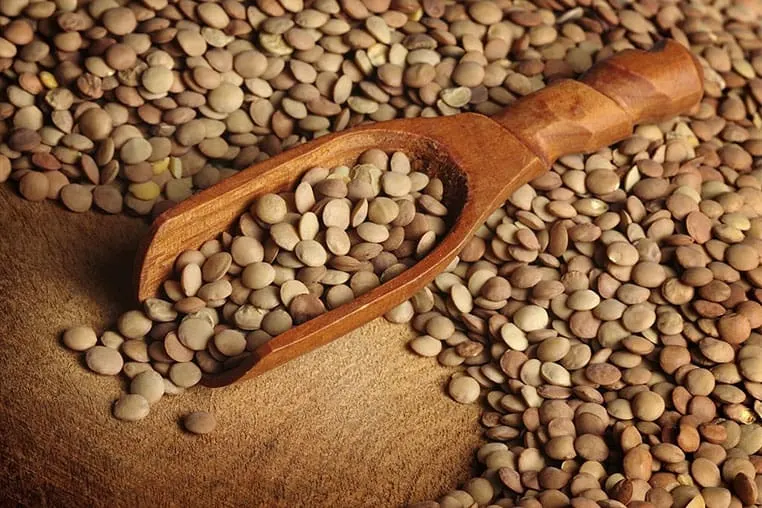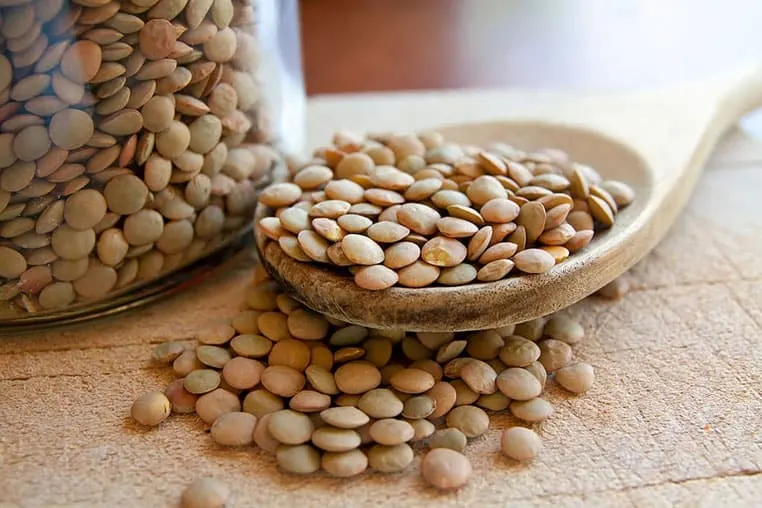If you’re not familiar with lentils, it can be quite confusing when you go to a store and see all kinds of dried legumes being marked under ‘lentils.’
The truth is there are many varieties of this bean. Each type of lentil has a distinct size, color, and texture, and even taste.
They are staples in certain countries’ diets – India and Egypt, for example. In these cultures, people usually consume lentils as part of a meal.
However, there are cultures where these beans are often served as a soup. Either way, eating lentils is a delicious way of feeding fiber and protein to your body.
Regardless of their type, lentils always come in dried form. They are then fitted into packets or cans.
The major difference between dried and canned lentils is that the former does not contain sodium (AKA salt).
As with every food, you’re likely wondering, ‘how long do lentils last?’ The answer varies.
How Long Do Lentils Last? Do Lentils Go Bad?

Let’s begin with dried lentils, as they are the more common choice. Every packet of dried lentil typically has a ‘best by’ date on it.
This date is the time within which the lentils remain at their peak quality. You can still consume the lentils months after this set date as long as there’s no mold or bacteria growing on them.
You can apply this same reasoning even with canned lentils. The only difference is that because canned lentils have a high sodium content, you may want to rinse them thoroughly under running water before consuming them.
An unopened packet of dry lentils has a shelf life of up to a year. Canned lentils, when unopened, remain at their best quality for up to two years.

If all seems good even after the set shelf life of these legumes, they remain edible in most cases. You may notice that they don’t taste as flavorful as they do when at their peak quality. However, they are still usable.
We’ve all had days when we end up with a lot more leftover lentils than expected. It’s sometimes difficult to tell how much of these beans to cook.
Nonetheless, if you have quite a bit of cooked lentils on your hands and are wondering how long you have before they go bad, the answer is three to four days. Refrigerate leftover lentils to keep them fresh.
For health reasons, it’s advisable to discard cooked lentils once they reach their three to four day window.
How To Tell If Lentils Are Bad?

Cooked, dried, and canned lentils have their own signs to indicate spoilage. Here’s a breakdown of each of them.
Dried Lentils
- If you’ve ever had a packet of dried lentils in your home for a considerable amount of time, you’ll be familiar with pantry bugs that appear out of nowhere in your bag of these legumes. It’s not dangerous to eat such lentils, but it isn’t ideal either. If the invasion isn’t severe, weeding out the bugs should suffice.
- When dried lentils come in contact with moisture, it becomes the perfect playground for microbes to breed. In this case, throw out the entire batch of lentils.
- Lentils have a naturally mild odor. If your batch of these dried beans has a sour or strong smell, it may be bad.
Canned Lentils:
- You’ll want to be cautious about any cans that have dents, leaks, or rust.
- Canned lentils are basically pre-cooked lentils in a jar. When you open a can, you want its contents to look like cooked lentils. If there’s mold, discoloration, or a funky odor, the contents may be unusable. Take extra care to rinse the lentils if the can is from some time ago.
Cooked Lentils:
- Appearance is everything with lentils. Cooked lentils show signs of molding when they go bad.
- The second way to tell that cooked lentils are bad is by tasting them. If it tastes sour and has an unusual smell, discard the whole thing.
- Lastly, even if the bowl of lentils looks fine, it’s better to trash its contents if it’s been in the fridge for more than four days. It’s just the healthier thing to do.
Conclusion

Lentils are easy to cook, nutritious, filling, and affordable. It also helps that they can be prepared in a variety of ways and enjoyed with many different foods.
Lentils that are past their shelf life are still usable if they appear and smell fine. However, they may not offer the same level of nutritional value as when they were at their prime quality.
They also take longer to cook. If you are suspicious about a batch of lentils, the best option is to discard it.
We say this because, as with any other food, you risk an upset stomach if you consume spoiled lentils.

How Long Do Lentils Last? Do Lentils Go Bad?
Ingredients
- Lentils
- Air-tight containers or Ziplock bags
- Labels and markers
Instructions
- Read the guide thoroughly to learn how long it lasts.
- Label your container with the content and date and keep track of how much you’re using!
- Make sure to store in an airtight container in a cool, dark place (pantry or fridge).
